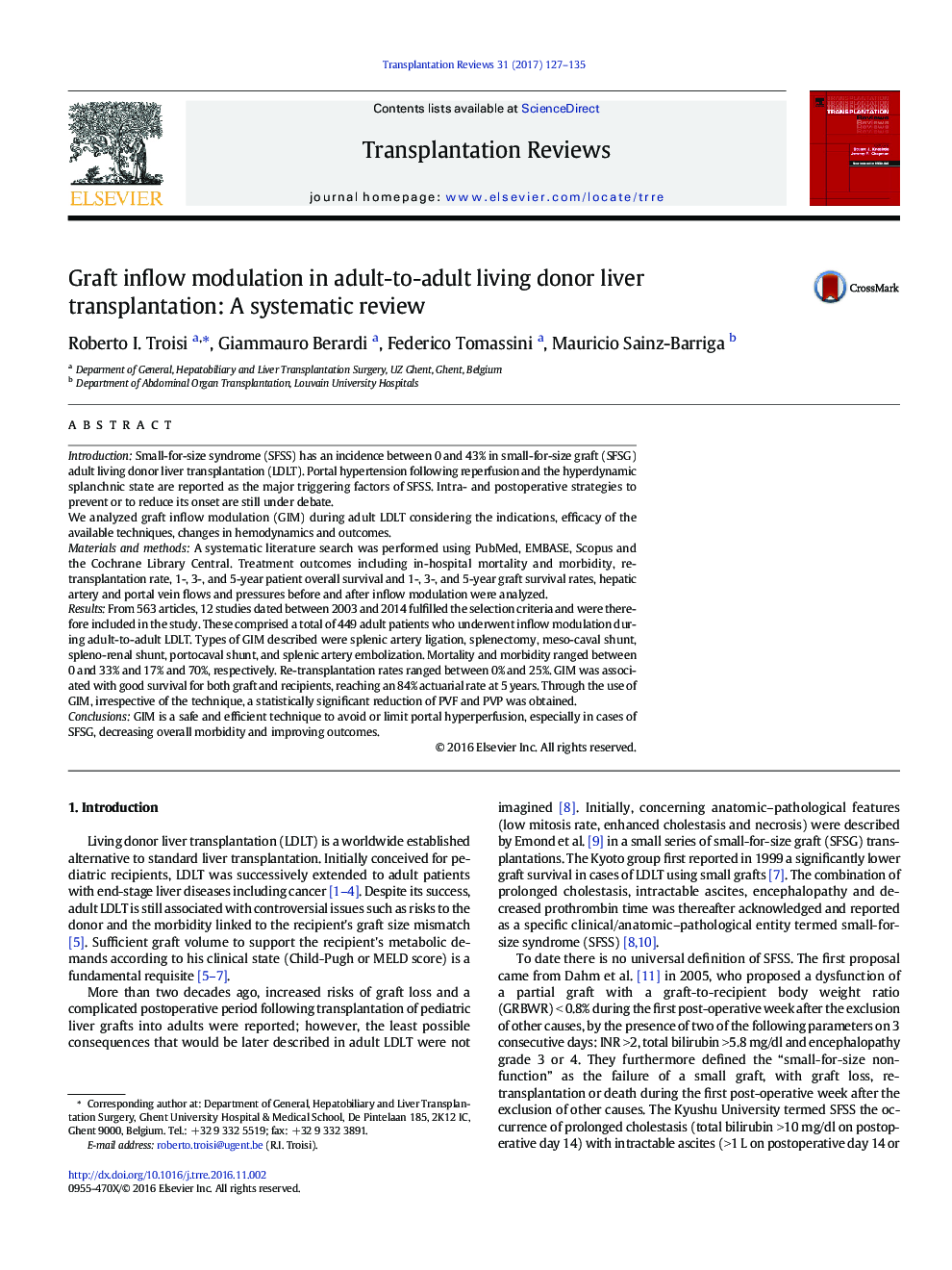| کد مقاله | کد نشریه | سال انتشار | مقاله انگلیسی | نسخه تمام متن |
|---|---|---|---|---|
| 5729435 | 1411681 | 2017 | 9 صفحه PDF | دانلود رایگان |
IntroductionSmall-for-size syndrome (SFSS) has an incidence between 0 and 43% in small-for-size graft (SFSG) adult living donor liver transplantation (LDLT). Portal hypertension following reperfusion and the hyperdynamic splanchnic state are reported as the major triggering factors of SFSS. Intra- and postoperative strategies to prevent or to reduce its onset are still under debate.We analyzed graft inflow modulation (GIM) during adult LDLT considering the indications, efficacy of the available techniques, changes in hemodynamics and outcomes.Materials and methodsA systematic literature search was performed using PubMed, EMBASE, Scopus and the Cochrane Library Central. Treatment outcomes including in-hospital mortality and morbidity, re-transplantation rate, 1-, 3-, and 5-year patient overall survival and 1-, 3-, and 5-year graft survival rates, hepatic artery and portal vein flows and pressures before and after inflow modulation were analyzed.ResultsFrom 563 articles, 12 studies dated between 2003 and 2014 fulfilled the selection criteria and were therefore included in the study. These comprised a total of 449 adult patients who underwent inflow modulation during adult-to-adult LDLT. Types of GIM described were splenic artery ligation, splenectomy, meso-caval shunt, spleno-renal shunt, portocaval shunt, and splenic artery embolization. Mortality and morbidity ranged between 0 and 33% and 17% and 70%, respectively. Re-transplantation rates ranged between 0% and 25%. GIM was associated with good survival for both graft and recipients, reaching an 84% actuarial rate at 5 years. Through the use of GIM, irrespective of the technique, a statistically significant reduction of PVF and PVP was obtained.ConclusionsGIM is a safe and efficient technique to avoid or limit portal hyperperfusion, especially in cases of SFSG, decreasing overall morbidity and improving outcomes.
Journal: Transplantation Reviews - Volume 31, Issue 2, April 2017, Pages 127-135
